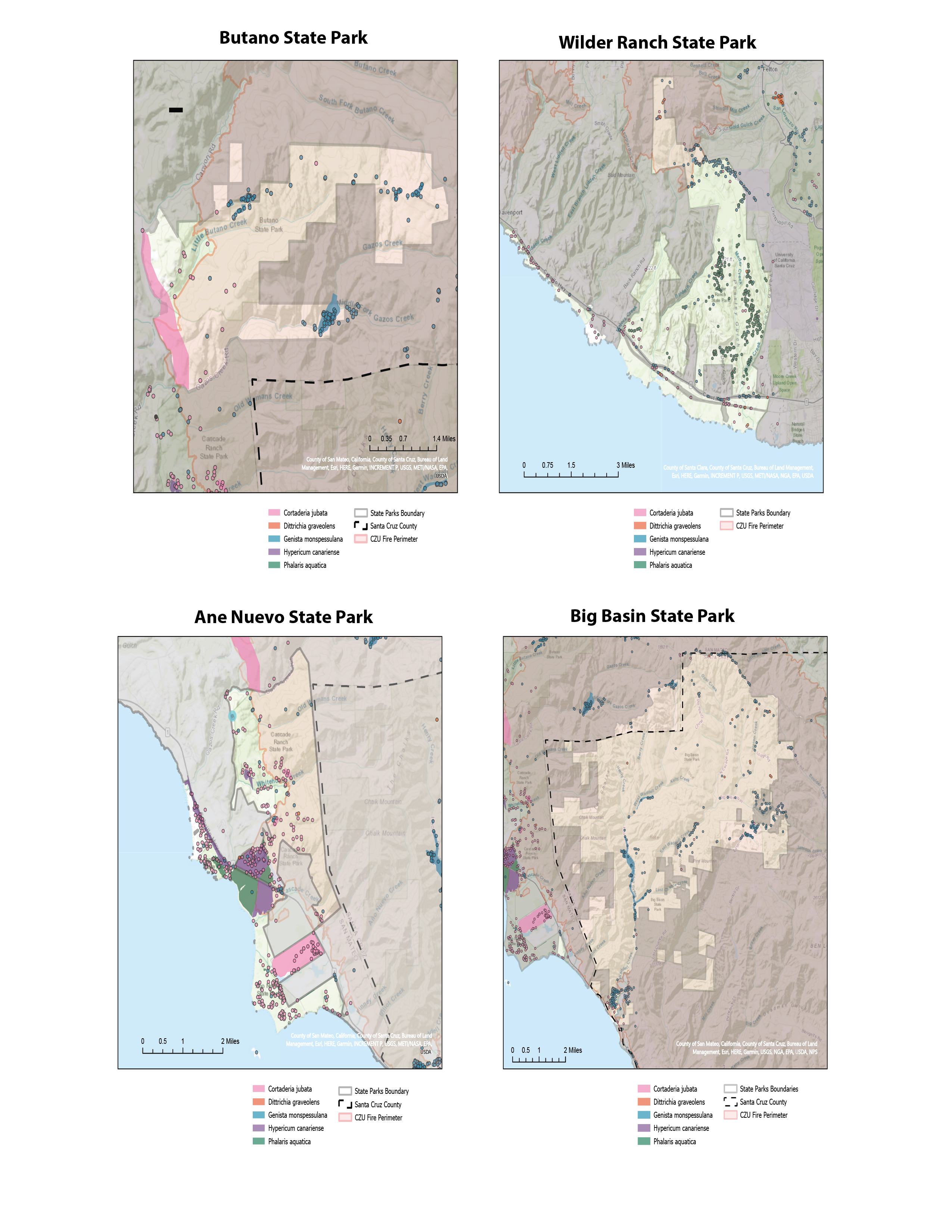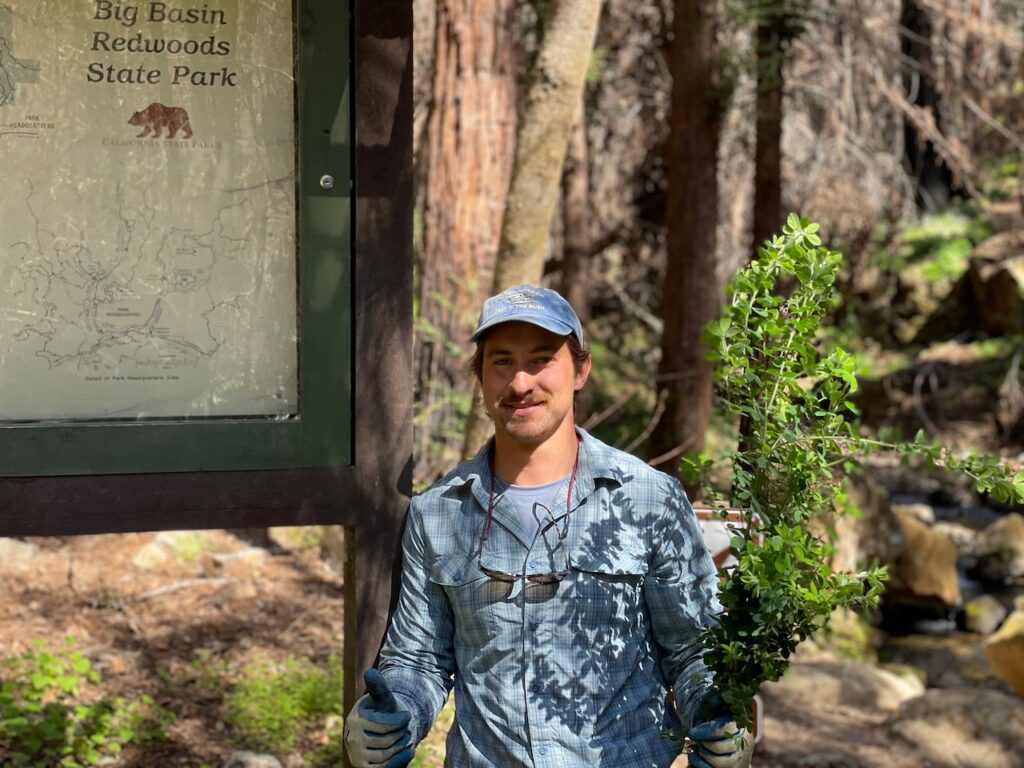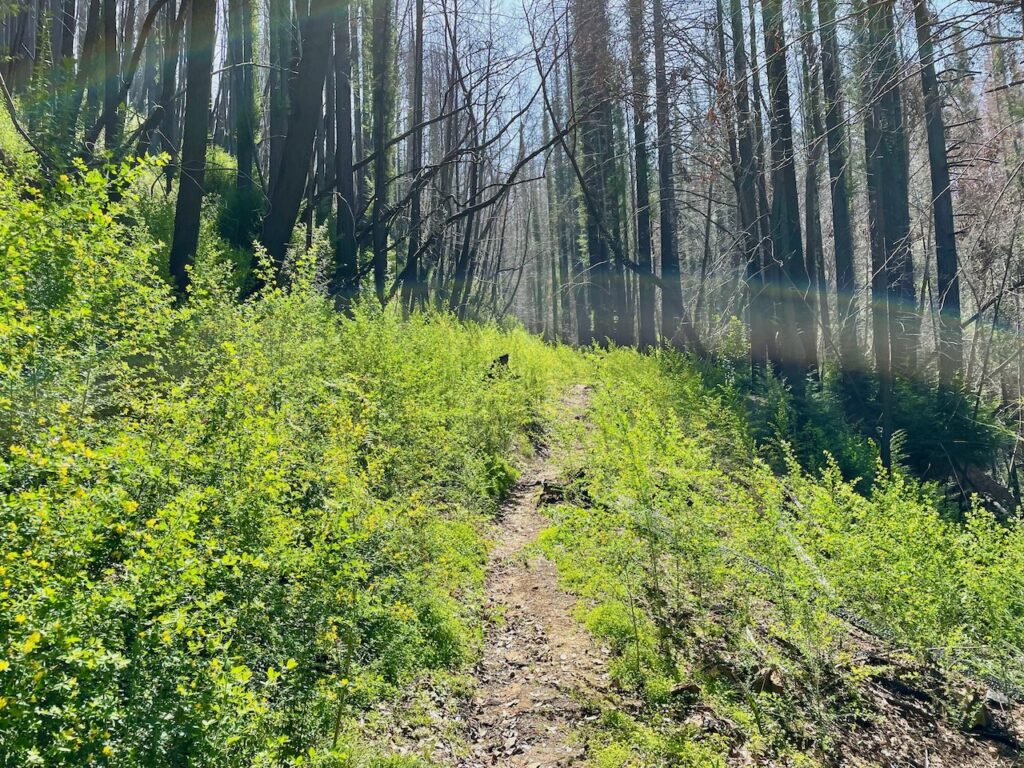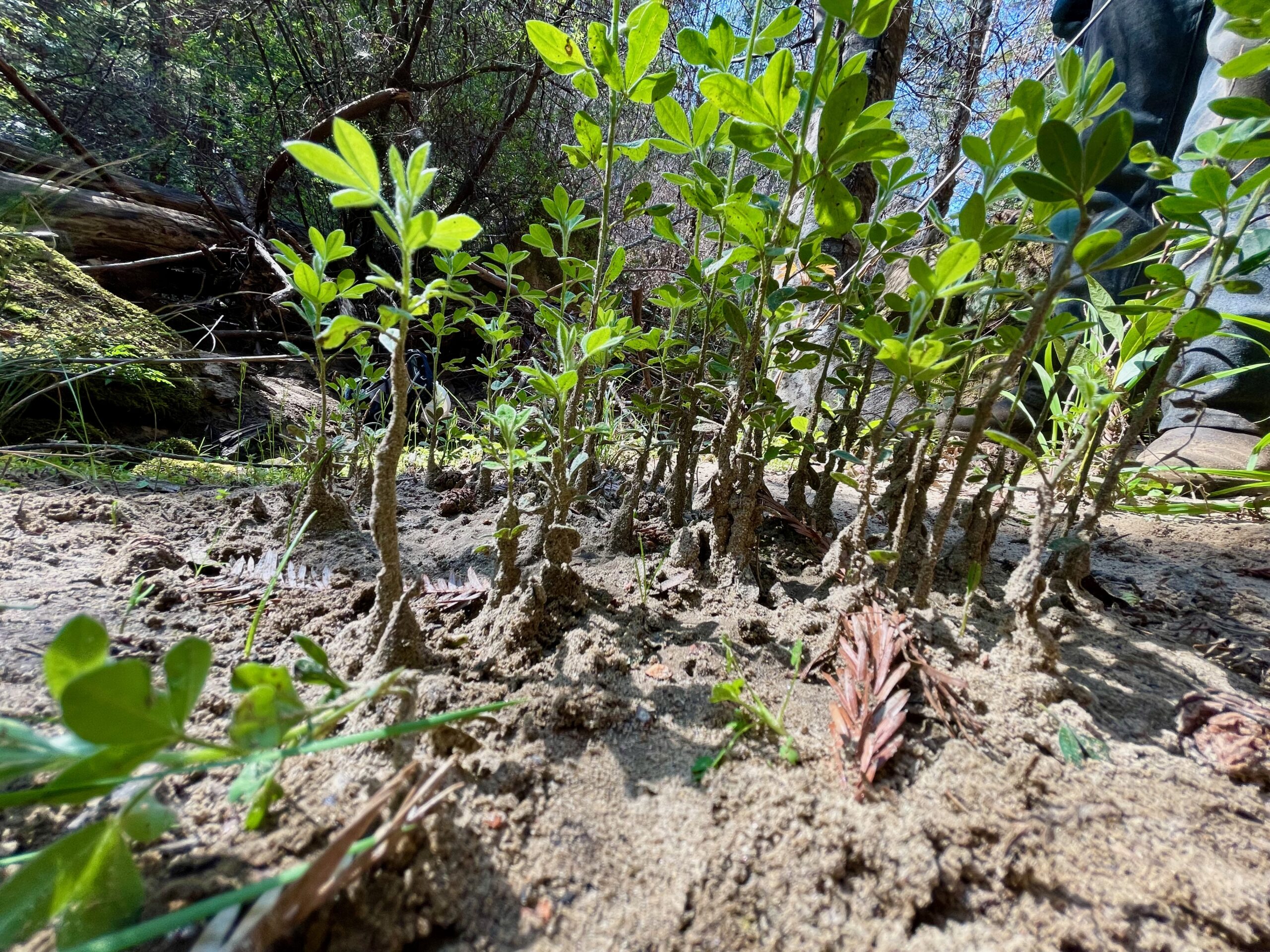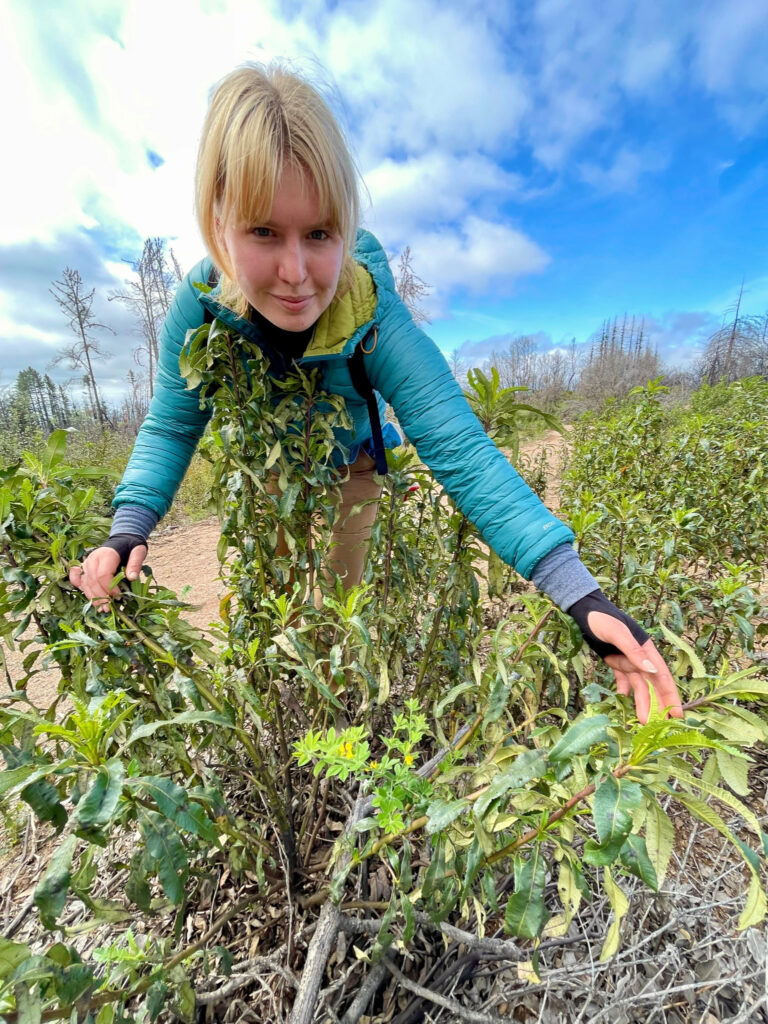The Invasive Plant Control Project is supporting biodiversity in Santa Cruz County be removing invasive plant species that disrupt ecosystem function and reduce habitat value. In 2021 Groundswell initiated a partnership with the Agricultural Commissioner of Santa Cruz County and California State Parks for Early Detection and Treatment of Invasive Weeds Following the 2020 CZU Complex Fires. Funded by the California Department of Food and Agriculture’s Noxious Weed Program, this project focuses on early detection and rapid response (EDRR) to invasive weeds in large open spaces affected by the 2020 CZU Complex Fires.
The project is working to detect, document, and remove small easily controlled populations of target weed species in the CZU footprint. We communicated the presence of large populations to resource managers for follow up managment and also documented weed populations on adjacent public and privately owned properties with hopes of removing these populations in the future.
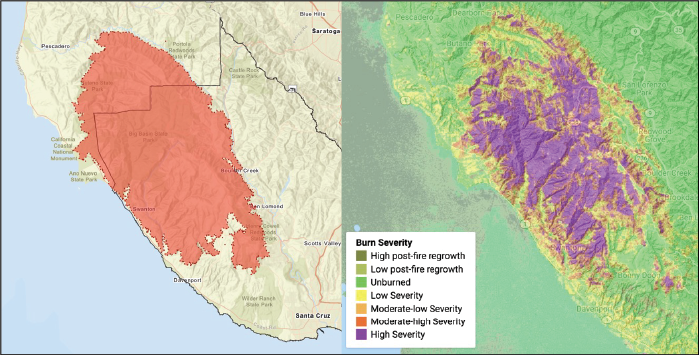
Priority weed species include: Andean pampas grass (Cortaderia jubata) An aggressive invader that has potential to hitchhike on fire suppression equipment and colonize in eroded areas following high intensity fires similar to the 2020 CZU Fire Complex. Canary Island St John’s wort (Hypericum canariense) A highly aggressive invader that has potential to hitchhike on fire suppression and equipment throughout the project area. During the CZU Fire Complex, multiple bulldozer and hand lines were constructed through known Hypericum populations and into private and public lands. Slender false brome (Brachypodium sylvaticum) A relatively recent invader of redwood understory and expanding in the project area. One population in Whitehouse Creek burned over and had fire control lines connecting to CA Department of Parks and Recreation (CADPR) land. Stinkwort (Dittrichia graveolens) An aggressive invader of roadsides and nutrient poor soils that has potential to hitchhike on fire protection suppression equipment throughout the project area. Likely to invade Chalks mountain area that experienced high intensity, stand replacing fire. French Broom (Genista monspessulana) This weed forms large dense monocultures and often displaces many acres of native plant species. French broom seed can remain viable for over 30 years and successful control efforts require long term effort.
